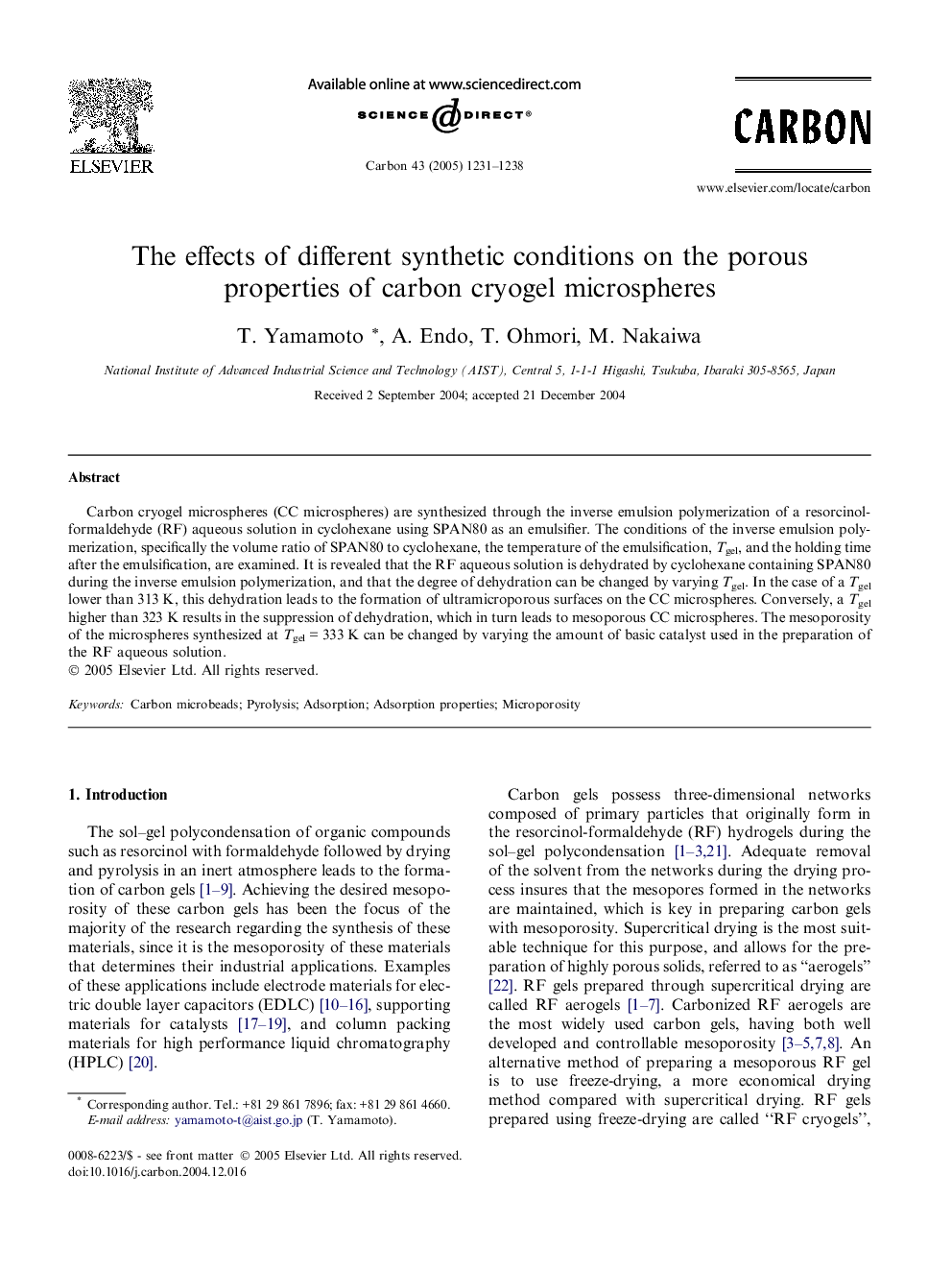| Article ID | Journal | Published Year | Pages | File Type |
|---|---|---|---|---|
| 10610648 | Carbon | 2005 | 8 Pages |
Abstract
Carbon cryogel microspheres (CC microspheres) are synthesized through the inverse emulsion polymerization of a resorcinol-formaldehyde (RF) aqueous solution in cyclohexane using SPAN80 as an emulsifier. The conditions of the inverse emulsion polymerization, specifically the volume ratio of SPAN80 to cyclohexane, the temperature of the emulsification, Tgel, and the holding time after the emulsification, are examined. It is revealed that the RF aqueous solution is dehydrated by cyclohexane containing SPAN80 during the inverse emulsion polymerization, and that the degree of dehydration can be changed by varying Tgel. In the case of a Tgel lower than 313 K, this dehydration leads to the formation of ultramicroporous surfaces on the CC microspheres. Conversely, a Tgel higher than 323 K results in the suppression of dehydration, which in turn leads to mesoporous CC microspheres. The mesoporosity of the microspheres synthesized at Tgel = 333 K can be changed by varying the amount of basic catalyst used in the preparation of the RF aqueous solution.
Related Topics
Physical Sciences and Engineering
Energy
Energy (General)
Authors
T. Yamamoto, A. Endo, T. Ohmori, M. Nakaiwa,
